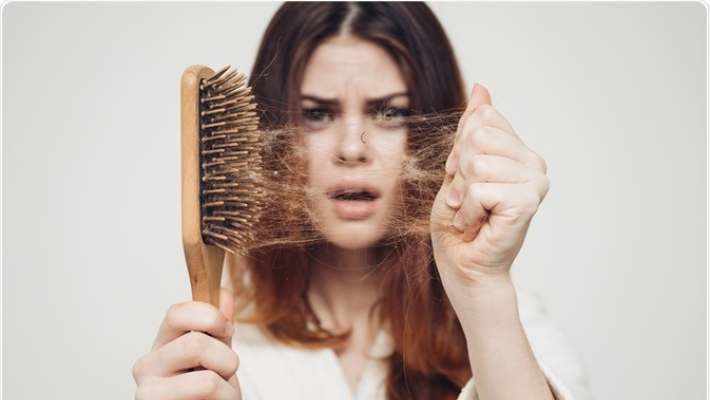
In women, female pattern hair loss generally occurs after the age of 50 or 60. According to a study published by the National Institutes of Health, "female pattern hair loss is the most common cause of hair loss in women, and it becomes more prevalent as age advances. problem may feel psychological distress and suffer a decline in social performance ".
According to a Harvard Women's Health Watch publication, "Hair loss generally has a greater impact on women than men because it is less socially acceptable." The organization notes that up to two-thirds of postmenopausal women suffer from thinning hair or have areas of baldness.
Hair loss in men, the Harvard article explains, "usually begins at the temples," and the receding hairline is shaped like the letter M. In women, partial hair loss Hair appears gradually, usually at the dividing line or part, and the loss spreads from the top of the head.
There are several causes of hair loss in women, including certain diseases, certain medications, and physical or emotional stress. Here we present five factors of hair loss that manifests itself in women over 50 years of age.
5 factors of hair loss
- Aging
- Changes in hormones, menopause
- Family history of female pattern baldness
- Stress (physical or emotional)
- Diet (poor nutrition)
What to do about hair loss
At present there is no known treatment that prevents female pattern baldness; the alternatives to deal with hair loss are: medications, topical treatments and transplants. However, you can take several steps to prevent further hair damage or loss.
Avoid hairstyles that pull the hair, such as braids, ponytails, or buns, as these can put too much pressure on the hair and damage the follicles.
Be careful around heat-using appliances like curling irons and blow dryers with brushes. If you use them, keep them on the lowest temperature and apply a heat protection spray to your curls.
Avoid overdoing it with chemical processes as ironing, bleaching, or lightening hair color can damage hair shafts.
Consume more vitamin-rich foods such as iron, zinc, and vitamin B12, either through diet or with nutritional supplements, to help revitalize thinning locks.
Try conditioning your scalp with essential oils. For example, massaging a few drops of rosemary, cedarwood, lavender, or amaro on your head can invigorate your scalp and enhance hair growth.







